Related Research Articles
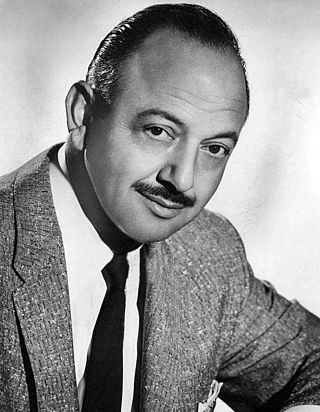
Melvin Jerome Blanc was an American voice actor and radio personality whose career spanned over 60 years. During the Golden Age of Radio, he provided character voices and vocal sound effects for comedy radio programs, including those of Jack Benny, Abbott and Costello, Burns and Allen, The Great Gildersleeve, Judy Canova, and his own short-lived sitcom.

Bugs Bunny is a fictional character created in the late 1930s at Warner Bros. Cartoons and voiced originally by Mel Blanc. Bugs is best known for his featured roles in the Looney Tunes and Merrie Melodies series of animated short films, produced by Warner Bros. Earlier iterations of the character first appeared in Ben Hardaway's Porky's Hare Hunt (1938) and subsequent shorts before Bugs's definitive characterization debuted in Tex Avery's A Wild Hare (1940). Bob Givens, Chuck Jones, and Robert McKimson are credited for defining Bugs's design.
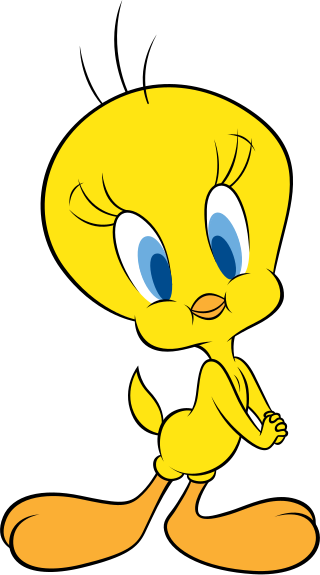
Tweety is a yellow canary in the Warner Bros. Looney Tunes and Merrie Melodies series of animated cartoons. The name "Tweety" is a play on words, as it originally meant "sweetie", along with "tweet" being an English onomatopoeia for the sounds of birds. His characteristics are based on Red Skelton's famous "Junior the Mean Widdle Kid." He appeared in 46 cartoons during the golden age, made between 1942 and 1964.

Woody Woodpecker is an animated character that appeared in theatrical short films produced by the Walter Lantz Studio and Universal Animation Studio and distributed by Universal Pictures since 1940. Woody's last Woody Woodpecker was produced by Walter Lantz in 1972.
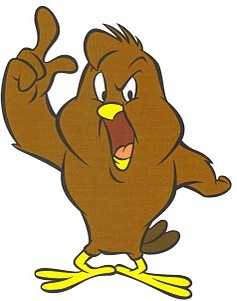
Henery Hawk is an American cartoon character who appears in twelve comedy film shorts produced in the Looney Tunes and Merrie Melodies series. His first appearance is in the 1942 theatrical release The Squawkin' Hawk, which was directed by Chuck Jones and produced by Leon Schlesinger. Henery's second screen appearance, one directed by Robert McKimson, is in Walky Talky Hawky (1946), which also features the characters Foghorn Leghorn and Barnyard Dawg in their first cartoon roles. The last Warner Brothers theatrical short to showcase the little chickenhawk is the 1961 release Strangled Eggs in which he co-stars again with Foghorn Leghorn as well as with another popular character of that period, Miss Prissy. Following that production, Henery continued to be seen periodically in other animated presentations such as The Looney Tunes Show and Looney Tunes Cartoons.

Sunday Go to Meetin' Time is a 1936 Warner Bros. Merrie Melodies cartoon directed by Friz Freleng. The short was released on August 8, 1936. The name of the short comes from the colloquial adjective "sunday-go-to-meeting", describing something appropriate for church or otherwise presentable.
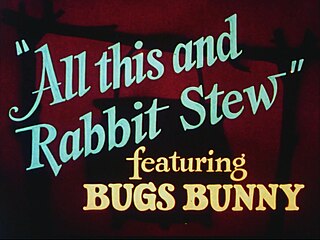
All This and Rabbit Stew is a 1941 Merrie Melodies cartoon directed by Tex Avery. The cartoon was released on September 13, 1941, and features Bugs Bunny.

Wackiki Wabbit is a 1943 Warner Bros. Merrie Melodies cartoon, starring Bugs Bunny. It was released on July 3, 1943, and was written by Tedd Pierce and directed by Chuck Jones.
Puppetoons is a series of animated puppet films made in Europe (1930s) and in the United States (1940s) by George Pal. They were made using replacement animation: using a series of different hand-carved wooden puppets for each frame in which the puppet moves or changes expression, rather than moving a single puppet, as is the case with most stop motion puppet animation. They were particuarly made from 1932-1948, in both Europe and the US.
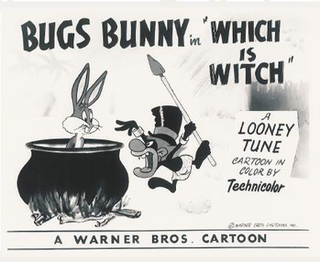
Which Is Witch is a Looney Tunes cartoon released by Warner Bros. in 1949, directed by Friz Freleng and written by Tedd Pierce. The cartoon was released on December 3, 1949, and features Bugs Bunny.
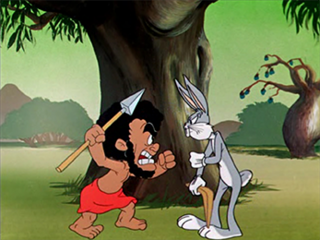
Bushy Hare is a 1950 Warner Bros. Looney Tunes cartoon directed by Robert McKimson. The short was released on November 18, 1950, and stars Bugs Bunny.

Buckaroo Bugs is a 1944 American Western Looney Tunes cartoon film directed by Bob Clampett. The cartoon was released on August 26, 1944, and features Bugs Bunny in his official Looney Tunes debut.
Jasper and the Haunted House is a 1942 American animated short film in the Madcap Model series by George Pal. It is an early entry that features the popular yet controversial Paramount Puppetoons characters Jasper and his friend/nemesis Professor Scarecrow and Blackbird.

The Foghorn Leghorn is a 1948 Warner Bros. Merrie Melodies cartoon directed by Robert McKimson. The cartoon was released on October 9, 1948, and features Foghorn Leghorn, Henery Hawk and the Barnyard Dawg.
The Fella with a Fiddle is a 1937 Warner Bros. Merrie Melodies cartoon directed by Friz Freleng. The short was released on March 27, 1937.
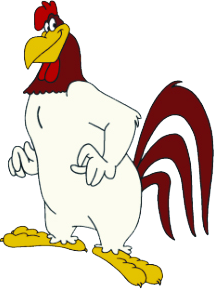
Foghorn Leghorn is an anthropomorphic rooster who appears in Looney Tunes and Merrie Melodies cartoons and films from Warner Bros. Animation. He was created by Robert McKimson, and starred in 29 cartoons from 1946 to 1964 in the golden age of American animation. All 29 of these cartoons were directed by McKimson.

Apes of Wrath is a 1959 Warner Bros. Merrie Melodies animated short directed by Friz Freleng. The short was released on April 18, 1959, and stars Bugs Bunny. This cartoon recycles the plot from the 1948 cartoon Gorilla My Dreams. The title is a parody of John Steinbeck's novel The Grapes of Wrath.
Fowl Weather is a 1953 Warner Bros. Merrie Melodies animated short directed by Friz Freleng. The short was released on April 4, 1953, and stars Tweety and Sylvester.

The Early Worm Gets the Bird is a 1940 Warner Bros. Merrie Melodies cartoon supervised by Tex Avery. The short was released on January 13, 1940. The name is a play on the adage "The early bird gets the worm."
John Henry and the Inky-Poo is a 1946 stop-motion animation film written and directed by George Pal using Pal's Puppetoons stop-motion style. The film is based on African American folk hero John Henry.